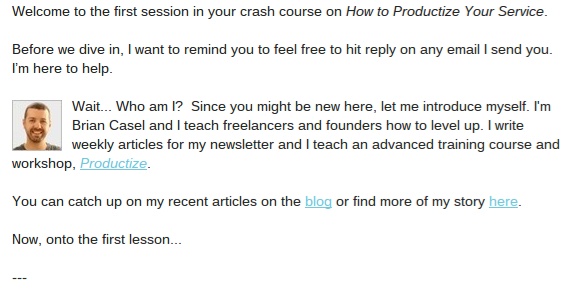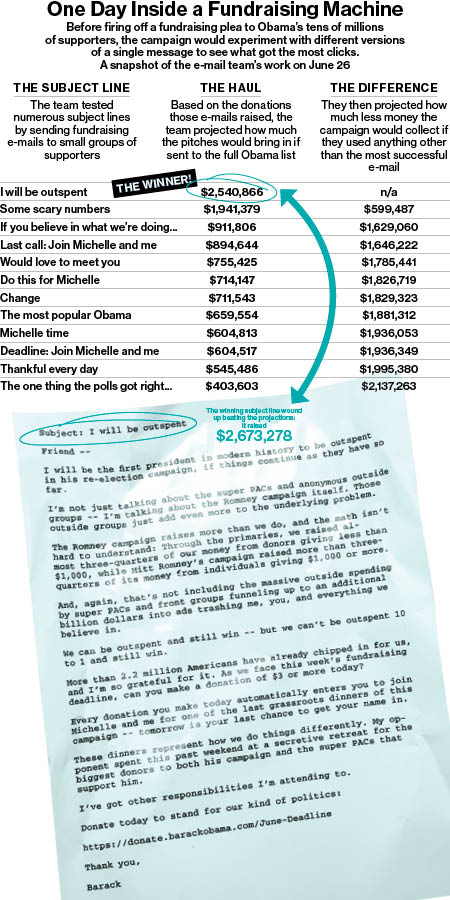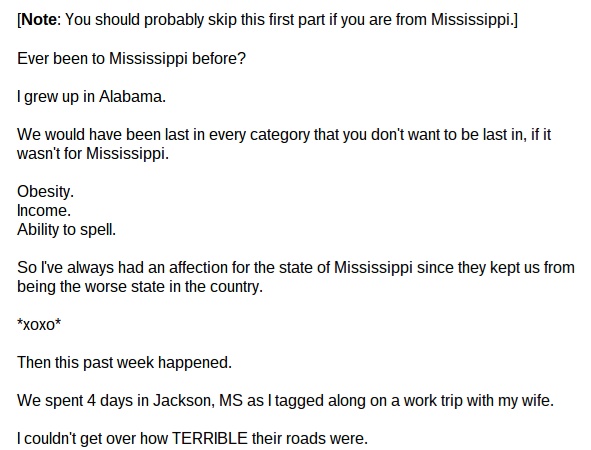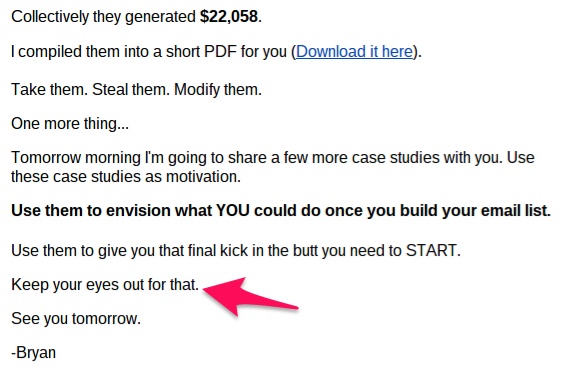The role of a marketer is more challenging than ever.
You’re not just tasked with creating compelling content. You also need to promote it effectively and convert your visitors into loyal email subscribers.
Email marketing still outperforms most channels for ROI when it’s done well—and it’s central to building owned audiences you can reach anytime.
But the work doesn’t stop there. You need to nurture relationships with your subscribers to increase conversions.
Your goal is to ensure your subscribers don’t just tolerate your emails but actually look forward to the next one.
Traditional “average open rate” benchmarks are less useful today because privacy features (like automatic image loading) can inflate opens. Treat opens as directional only—optimize for clicks, replies, and conversions. (Apple’s Mail Privacy Protection preloads images, which can auto-trigger opens.)
Would you be satisfied with only a small slice of your list truly engaging? Remember, opens don’t equal attention—what matters is whether people click, reply, and act.
If you’re not satisfied with average engagement, you’re not alone. You can achieve far better results by avoiding common mistakes and focusing on value.
Email routinely drives industry-leading returns—but the real upside shows up when 50–60% of your engaged subscribers consistently interact with your messages.
In this post, we’ll walk you through strategies to achieve those kinds of results.
Set the Stage: After the Signup
You’ve successfully convinced someone to sign up for your email list—fantastic.
To get them on board, you likely offered something of value. Whether it’s regular content updates or a free lead magnet, there’s something they want from you.
In today’s fast-paced world, there’s no excuse not to deliver your lead magnet within minutes of a new subscription. Most email platforms let you send instantly with an automated welcome email or autoresponder.
This may seem simple, but it’s crucial. People have short attention spans.
If the subscriber is a loyal reader who’s just now joining your list, it may not matter much. But for most subscribers, who might not be familiar with you yet, quick delivery can make the difference between building a lasting relationship and ending up in the spam folder.
Think back to a time when you signed up for a free offer from someone you didn’t know well. If they immediately sent you the promised freebie, you recognized who they were and why they were emailing you.
But if there’s a delay of even a few hours or a day, you might wonder, “Who are these people again?”
Your subscribers are protective of their inboxes. If they don’t know you, they’re cautious when opening your email. Some won’t mind, but others may feel annoyed or even suspicious.
Deliver on what you promised without delay. It’s that simple.
Now that you’ve fulfilled your promise, it’s time for the next step: set clear expectations.
The first follow-up email tends to have the highest engagement. Use it to establish your cadence (e.g., weekly), what kind of value you’ll deliver, and how readers can manage their preferences.
So, what should you say? The content of your first email depends on how your subscriber joined your list.
If they signed up for something specific, like lessons or a guide, they likely know what to expect—occasional emails with more lessons or updates.
For this type of subscriber, focus less on what you’ll send (like lessons and updates) and more on the frequency and how to get the most out of your emails (e.g., add you to contacts, hit reply to say hello, choose topics in a preferences link).
However, if subscribers signed up for a free report or course, they may not immediately realize they’ve joined your mailing list.
Brian Casel offers a productization course for freelancers. When you opt-in for this course, you immediately receive an email that begins with:

Brian does several important things here:
- He introduces himself so subscribers won’t forget who he is
- He includes a personal headshot
- He introduces his course without being overly pushy
- He sets clear expectations by noting that this is the first in a series of email lessons
Most importantly, Brian ensures that nearly all of his new subscribers will read this first email because it’s right at the top of his email list. Then, he delivers exactly what he promised.
Now, if you offer a one-time download as a lead magnet like Jon Morrow’s Headline Hacks, there’s an important lesson to learn from him too.
At the end of every email, he includes this reminder in his P.S.:

This simple reminder reinforces what the subscriber signed up for.
Often, a new subscriber might download your lead magnet, appreciate it, but forget who you are within a day. Then, when they receive an email from you, they might be confused about why they’re hearing from you. This can lead to unsubscribes, being marked as spam, or even I NEVER SIGNED UP FOR THIS! responses.
Including this short reminder will help reduce complaints and avoid confusion, keeping your relationship with your subscribers intact.
Let’s review the steps to crafting emails your subscribers will look forward to receiving.
Step 1: Start with an Enticing Subject Line
Once you’ve set the stage, it’s time to focus on crafting emails your subscribers can’t wait to open.
It all begins with a compelling subject line—and the preview text and from-name that appear alongside it.
The subject line functions similarly to a blog post headline, though you have more flexibility in your approach. Aim for clarity first, then curiosity.
Subject Line Tactic #1: Use Numbers
If you’ve been following us on the Quick Sprout blog you know we’re fans of numbers in headlines. We especially love creating list posts.
Numbers stand out, are easy to read, and naturally capture interest. Even The New Yorker acknowledges the power of numbers:
“Whenever we’re scanning the environment for nothing in particular, our visual system is arrested by the things that don’t fit—features that suddenly change or somehow stand out from the background. A headline that is graphically salient in some way has a greater chance of capturing our eye, and in an environment where dozens of headlines and stories vie for attention, numerals break up the visual field.”
Adding numbers to your subject lines is one of the most effective ways to boost your open rates—as long as the email delivers on the numbered promise.
Subject Line Tactic #2: Spark Curiosity
Curiosity is a powerful tool in email marketing. When we’re curious, it can drive us to open an email just to satisfy that need to know.
Crafting a subject line that induces curiosity takes practice, but when done effectively, it works wonders.
The key is to highlight an intriguing result but leave the details somewhat vague. This will naturally pull readers in to discover how you achieved that result—without veering into clickbait.
For instance, if we sent an email with the subject line, This one tactic led to 60,000 visitors in two months on a new blog…, wouldn’t you open the email just to find out what This one tactic was?
It’s a similar strategy behind those one weird trick advertisements—just make sure your content actually delivers the answer.

Subject Line Tactic #3: Keep It Short
Shorter subject lines often perform better because they’re easier to scan and less likely to be truncated on mobile. Brevity helps—so does clarity. Trim filler words and put the most important terms first.
- Shorter subject lines are easier to read and won’t get cut off.
- They generate more curiosity and intrigue.
- They force you to be clear and direct, which is essential for effective communication.
Subject Line Tactic #4: A/B Test Different Subject Lines
Everyone should test multiple subject lines—yes, even major campaigns do this because tiny tweaks can create massive swings in performance.
Big takeaways: test one variable at a time, set a meaningful sample size, and choose winners on click rate or downstream conversions—not just opens.

One way to split-test subject lines is to send different versions to small segments of your list, then send the winning subject to the rest of your audience.
Most email providers—including Aweber—offer built-in A/B testing. Use your platform’s split-test workflow to compare subject lines, preview text, or from-names and measure results.

After saving your test, you’ll see drafts for each variation. Edit each email individually with your subject lines and content, then let the data pick the winner.
Step 2: It’s All About Value
Consider why new subscribers open your first email: it’s to get something valuable.
At this point, you’re not a friend. You’re not even an acquaintance.
But you have something they want—whether it’s knowledge, a tool, or a resource.
While it’s not necessarily wrong to pitch your services right away, in many cases, it is.
Generally speaking, people tolerate pitches to receive value from you.
If you pitch too early, too often, or too aggressively, you risk scaring away potential customers.
Think of each new subscriber like a new bank account. Every time you add value, you make a deposit. But every time you pitch or fail to deliver on your promises, you make a withdrawal. Make too many withdrawals, and they’ll close the account.
Trust takes time: You must earn it by providing consistent value. Once subscribers realize you’re not just trying to make a quick sale but genuinely adding value to their lives, they’ll start trusting you.
Take Glen Allsopp, the owner of DETAILED. He runs a successful blog focused on viral marketing, and he’s known for creating in-depth guides and offering fresh insights in his niche that no one else has uncovered. In other words, he offers immense value.
When Glen’s subscribers see an email from him, they know it’s going to contain valuable content that can improve their marketing results. That’s the secret to his impressive engagement rates:
Practical ways to add value fast: send a quick-win template or checklist, share a teachable story, or give a short video walkthrough. Keep the ratio heavily in favor of value before you ask for anything.
Step 3: Make It Personal
Think about how you make a new friend.
You gradually learn more about each other as time goes on, and the bond grows stronger.
Of course, you and your subscribers share a common interest in your niche, but that’s all you have in the beginning. At first, you’re just a name behind some text.
Here’s how to develop that relationship with your subscribers.
Share Personal Stories
One of the best ways for someone to get to know you is to share personal stories. You can do this on your blog, but email is another great medium for this. After all, friends don’t write blog posts when they want to share a personal story—they send emails.
Bryan Harris often starts his emails with engaging short stories. He always ties them back to the point he’s making, so not only does the reader get to know him better, but they also get value from the story.

Talk to One Person—Add Personality
Readers don’t want to be talked to in a robotic or corporate tone. Write your emails like you’re talking to a friend. Use “you” and “I,” and don’t hesitate to add some personality and even occasional slang.
If you struggle with this, try drafting the email in Gmail first and treating it like a personal message. Once you’re happy with it, copy and paste it into your email service provider.
Use personalization tokens carefully (with fallbacks), and personalize by interest, not just by name—segment by topics people actually want.
If You Rush, You’ll Freak People Out
We’ve all encountered people who rush into a relationship too quickly. It’s like when someone you’re dating tells you they love you on the first date (classic Ted Mosby moment).
Relationships take time. Don’t overwhelm your subscribers with too much personal information too soon. When they first sign up, they might appreciate knowing who you are and learning a cool fact about you, but they don’t need your entire life story.
Step 4: Create Cliffhangers
We’ve already discussed the power of curiosity, so here’s a way to leverage that with cliffhangers.
Cliffhangers keep readers hooked, eager to know what happens next. Think of each email as a series where one message leads naturally into the next.
At the end of your emails, reveal an interesting result or event, and then tease the details for the next email.
For example, say something like, “In the next email, I’ll show you exactly how we increased traffic by 50% in one month.” That’s your cliffhanger, and it will keep readers eagerly waiting for the next installment.
You can create a cliffhanger in several ways:
The first option is to continue a topic that’s already captured your subscribers’ interest. For example, Bryan Harris uses this strategy effectively, finishing an email by promising to send more details the following day.

Here’s another example of a cliffhanger from Nathan Barry. He teases his readers with the promise of a pricing strategy that could triple revenue, but he doesn’t reveal it until the next email. This simple cliffhanger keeps readers coming back for more.

Lastly, you can create more subtle cliffhangers by dropping hints throughout your emails. For example, Ramit Sethi often asks questions that his readers are eager to know the answers to, encouraging them to open his next email.

Step 5: Make Your Emails Two-Way Conversations
Serious question:
Do you value the opinions of your subscribers?
We hope you answered yes. After all, what’s the point of improving their lives if you don’t value their input?
Unfortunately, many email lists feel like one-sided conversations. It’s “we talk, you listen” instead of fostering an engaging dialogue.
That’s the wrong approach.
So, how do you fix this? Get your readers involved.
Many marketers try to get subscribers engaged, but they do so in the wrong ways.
It’s similar to how less effective teachers ask questions in a way that discourages participation—creating an awkward silence until they pick someone to answer.
But there’s a better way.
Here are the main reasons people don’t respond:
- They fear giving the wrong answer
- The answer seems obvious to them
- They don’t care about the question
- They feel insignificant and think someone else will answer
Let’s address these concerns one by one.
Reason #1: They’re Afraid to Be Wrong
You’re the expert in your niche, but your subscribers might feel hesitant to answer your questions because they fear being wrong.
Here’s what you can do:
First, allow them to answer anonymously. If you’re collecting data, send them a Google Forms link and make it clear they don’t have to include their name.
Second, share your own answer when you first encountered the question. Let them know you weren’t perfect at first either. Encourage them by saying, “Not many people get this right on the first try,” and invite them to give it a shot.
Lastly, offer an alternative: Let them comment on your website instead of responding directly to your email. This is a great way to involve them without putting them on the spot.
Reason #2: The Answer Is Obvious
Sometimes, we ask questions in our content because the answers seem obvious to us, but your subscribers might not feel motivated to respond to something they consider trivial.
The lesson here is: Don’t try to trick people into engaging. Only ask questions that have real purpose and value.
Reason #3: They Don’t Care About the Question
Sometimes, marketers ask questions that are unrelated to the topic at hand. This is a surefire way to lose your readers’ attention.
Keep your questions relevant to your niche, and your readers will be far more likely to engage.
Reason #4: They Feel Insignificant
Getting your readers to engage becomes trickier when you have a large list. They may feel like just another faceless person among thousands, which makes it harder to motivate them to respond.
One way to make your readers feel special is by targeting specific groups within your list. For example, rather than asking, “What strategies have you tried to increase your conversion rate?” try asking:
“If you run a website with over 20,000 monthly visitors, what strategies have you used to boost your conversion rate?”
This makes it feel more personalized and targeted, and your readers will feel like they’re part of a smaller, more exclusive group.
Another way to make your readers feel valued is by offering to feature their answers in a future email or blog post. This shows that you care about their feedback and highlights their contributions.
Finally, never make your readers feel like their responses are going into a black hole. Let them know that you read and respond to every email, or at least acknowledge that you appreciate their input.
Respond to as many replies as you can. Even if it’s time-consuming, it’s the best way to build relationships and gain loyal fans.
Step 6: Bigger Isn’t Always Better
While lengthier emails can work, they shouldn’t be your default approach.
Some marketers write long-form emails that are 1,000+ words and do well with them, but if you’re going to write that much, you’d better have something truly valuable to say.
If your subscribers read through a lengthy email only to get little value from it, they likely won’t be eager to read another long email in the future.
Also, sending long emails more than once a week can overwhelm your subscribers, unless they’re completely hooked on your content.
It also takes a significant amount of time to write great long emails. Most marketers who do this are also skilled copywriters.
If you don’t have something substantial to say, stick to short and clear emails.
In general, shorter, focused emails make it easier for readers to scan, click, and act—especially on mobile.
Step 7: Function Over Form (Make It Readable)
If there were a way to measure email bounce rates, many marketers would be shocked by the results.
Failing to make your emails load quickly and be easily readable could result in them being deleted before they even get a chance to shine.
Tip 1: Go Light on Images and Fancy Formatting
We all know that images play a significant role in blog posts. They break up text, reinforce points, and enhance visual appeal.
However, email is a different beast. Unlike blog posts, emails should use images and formatting sparingly. Keep copy forward; avoid image-only emails, and always include descriptive ALT text.
Heavy images can slow load times—especially on mobile—and distract from your primary call to action. Use simple, clean layouts that put the message first.

Tip 2: Format for All Devices
Around half—often 50–60%—of email “opens” happen on mobile (varies by audience and is skewed by privacy features). Optimize for small screens and dark mode. Avoid complex CSS that doesn’t render in common clients.
Here are some best practices for mobile-friendly email formatting:
- Keep line lengths short: Front-load important words and avoid long run-on sentences.
- Limit images: Too many images can slow load times, cause formatting issues, and even trigger spam filters.
- Use dark text on a light background: Ensure strong contrast and test for dark mode reversals.
- Use button-style CTAs: Large tap targets (around 44px high), with clear, action-driven labels.
- Include a plain-text version: Helps deliverability and accessibility.
Tip 3: Make Links Obvious and Easy to Click
The goal of most emails is to get your subscribers to click through to a page on your website, so you need to make your links easy to identify and click.
On smaller mobile screens, clickable links can be hard to tap. The more prominent and obvious your links are, the better your click-through rate will be.
Here are some ways to make your links stand out:
- Put each link on a separate line
- Bold your links to make them pop
- Include multiple links to the same post with different anchor text
You don’t need to apply all these tactics at once, but incorporating a few can significantly improve your click-through rate.
For instance, we tend to use a consistent format in our emails, placing one link on its own line and offering three different anchor texts pointing to the same post.

Step 8: Send Consistently and Deliver on Your Claims
From the moment someone subscribes to your list, you should clearly communicate how often they’ll hear from you.
Consistency is key. If you don’t send regular emails, your readers will forget about you, and your list will stagnate. Pick a realistic cadence (weekly is a solid baseline for many) and stick to it.
Once your readers are expecting your emails regularly, thanks to your effective subject lines and valuable content, you need to ensure you follow through on your promises.
But what happens once your readers click through to the links in your emails? If you send them to a page that’s misleading or doesn’t fulfill your promise, you’ll lose their trust.
On the other hand, if you send them to a page that delivers exactly what you promised, you’ll build trust.
Brian Dean is a master at this. He only sends emails to his list once a month, but when his subscribers click through, they’re always blown away by the high-quality content he provides.
It’s better to be transparent about what you’re linking to and risk a lower click-through rate than to deceive your subscribers in the short term. Short-term gains will only result in long-term declines in engagement.
Deliverability checklist: authenticate your sending domain (SPF, DKIM, and DMARC), use a recognizable from-name, avoid spammy formatting, make unsubscribing easy with one-click List-Unsubscribe (RFC 8058) and process requests within 48 hours, keep spam complaint rates well under 0.3% (aim <0.1%), maintain valid DNS/reverse DNS, and sunset unengaged contacts after a sensible re-engagement attempt. Monitor clicks, replies, and conversions—not just opens.
Conclusion
Email marketing remains one of the most effective, reliable ways to grow an audience and drive revenue.
As you implement these eight steps in your email campaigns, remember that these are guidelines, not hard rules. Consider the core principles in each section and decide when and how to apply them to your own emails.
Keep delivering value, personalize with intent, and protect deliverability. Do that consistently, and you’ll see higher engagement—and better business outcomes—from your list.
